
Udemy - Blockchain


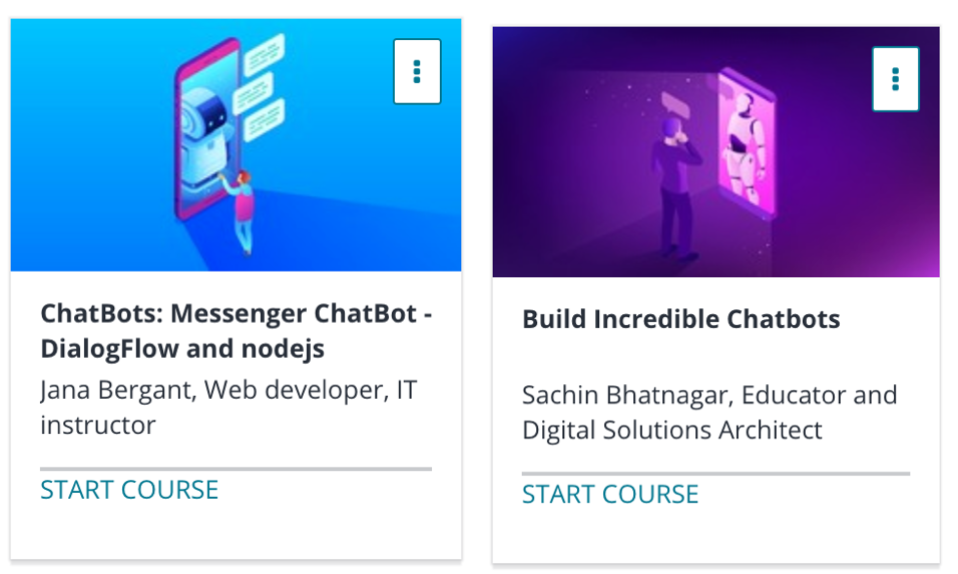
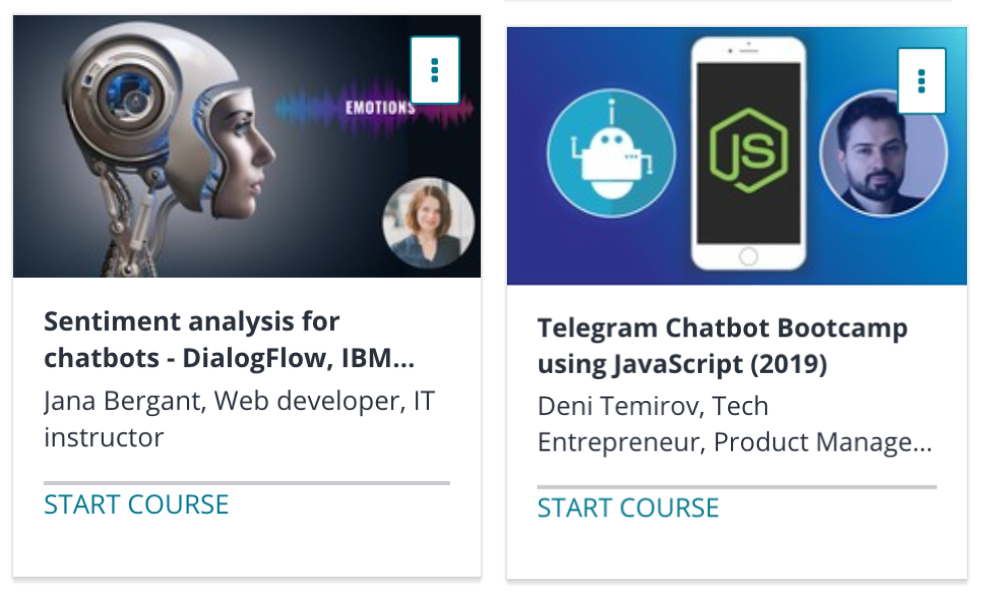
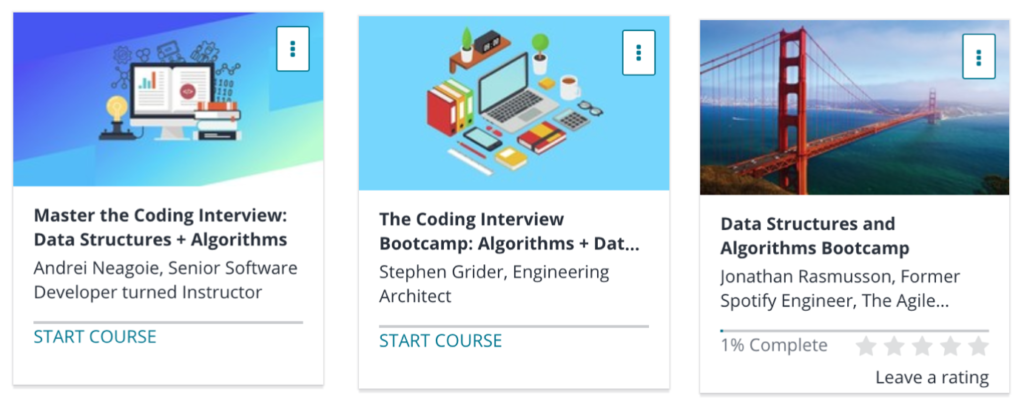
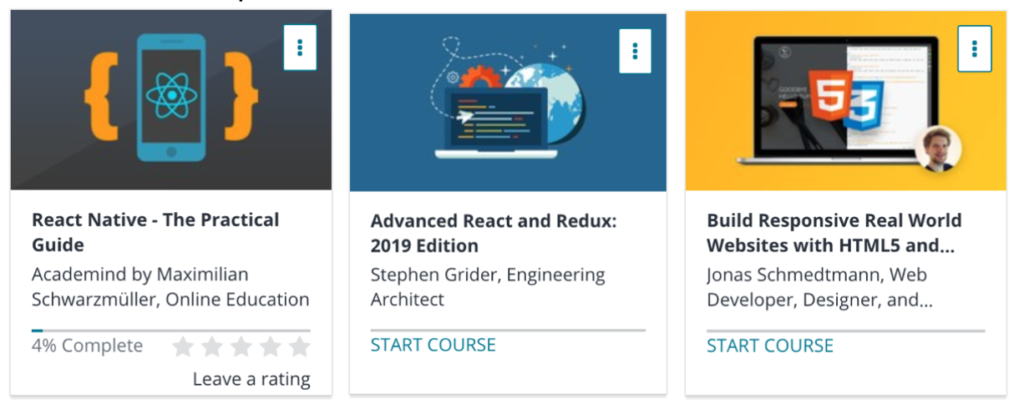
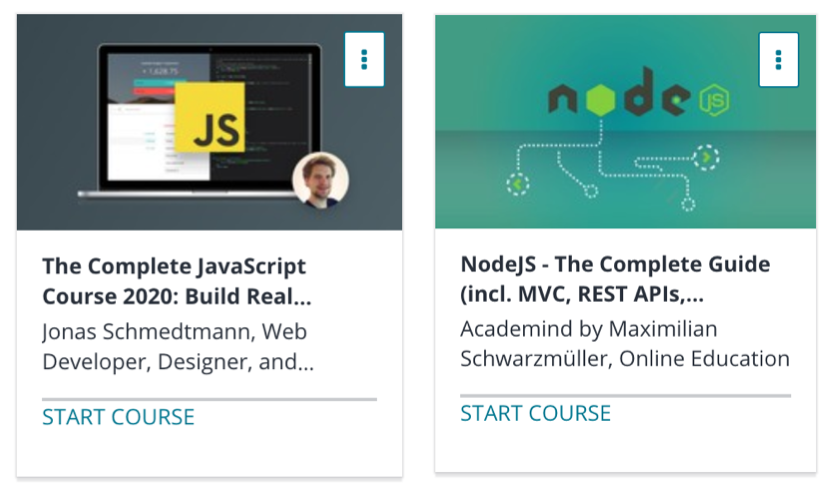
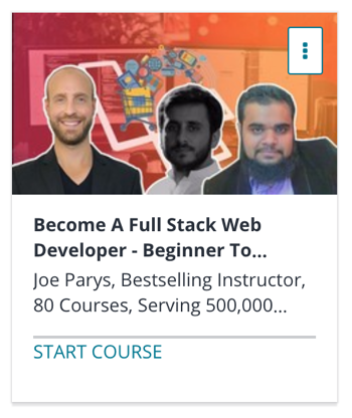

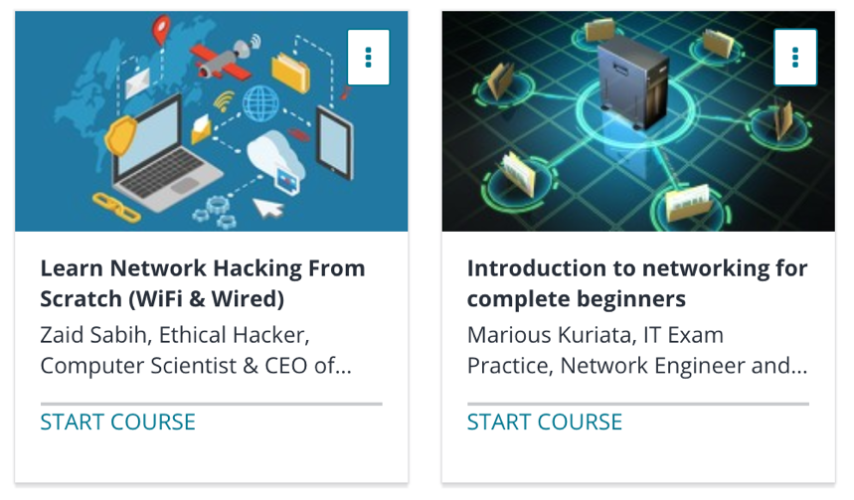
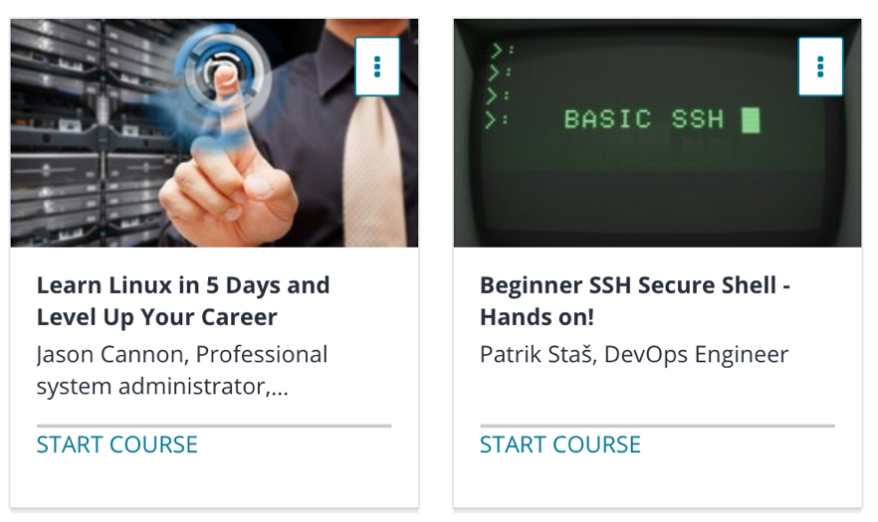

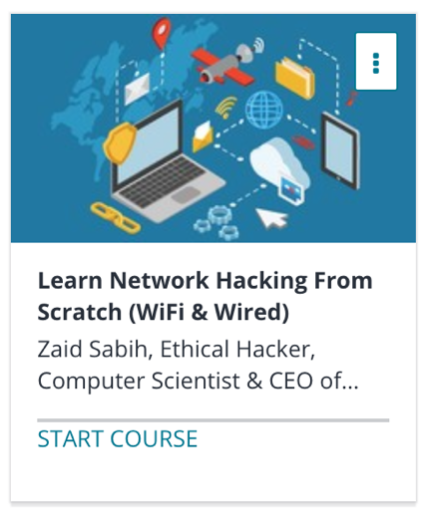

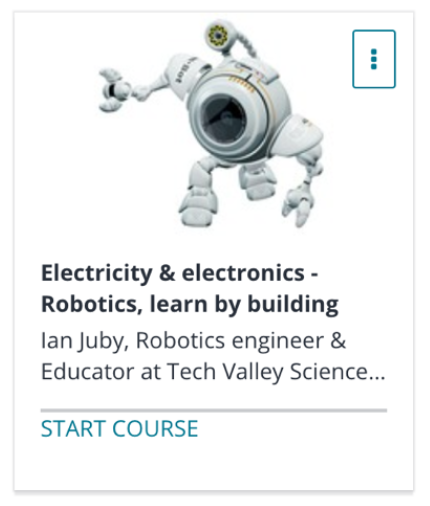

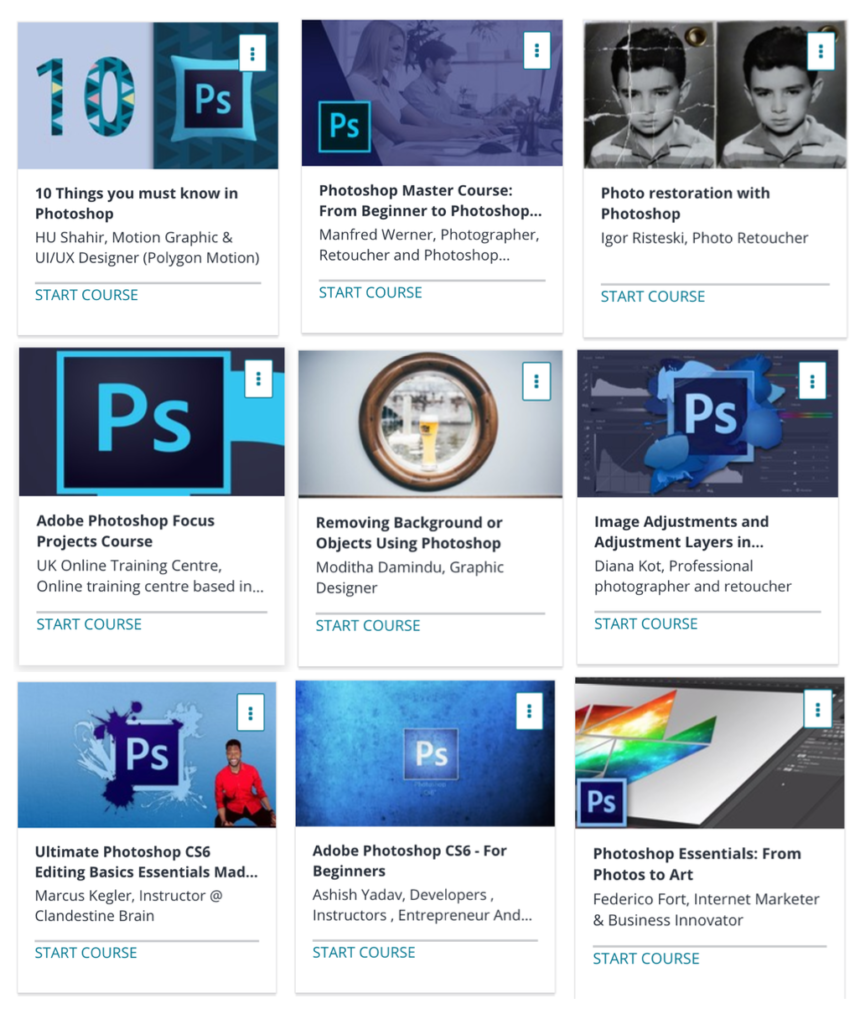
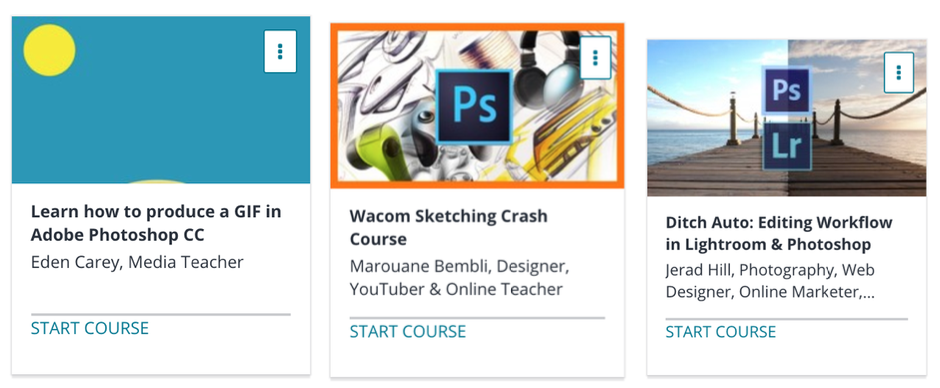


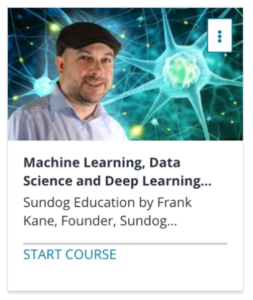


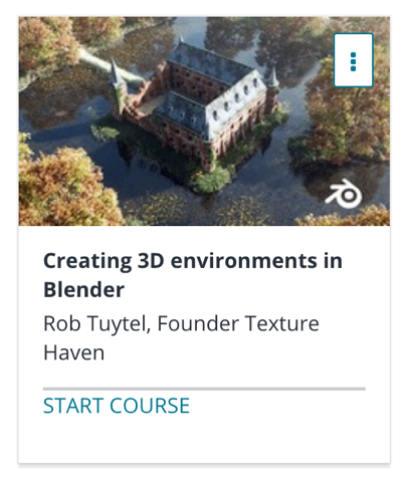
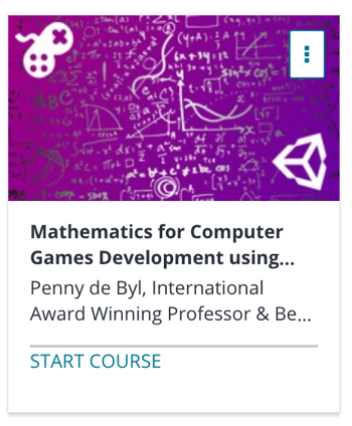



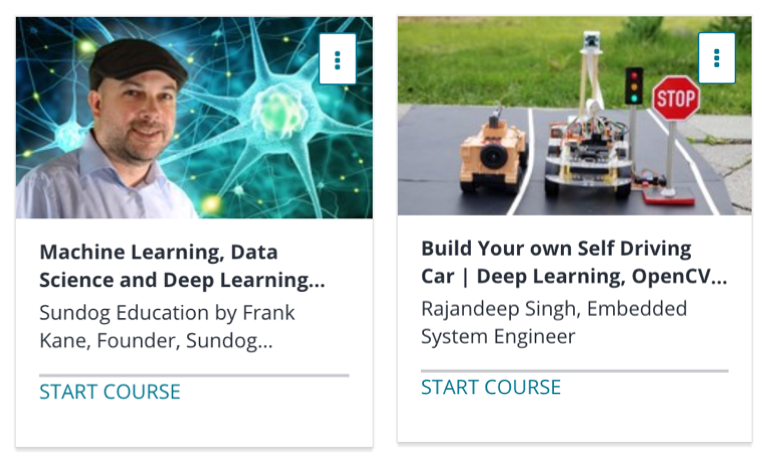
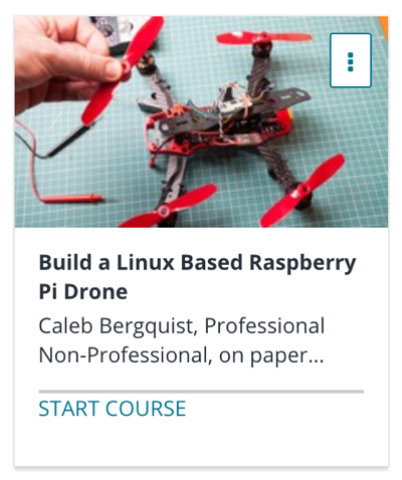
Inspirational quotes to fuel your mind, body and soul.

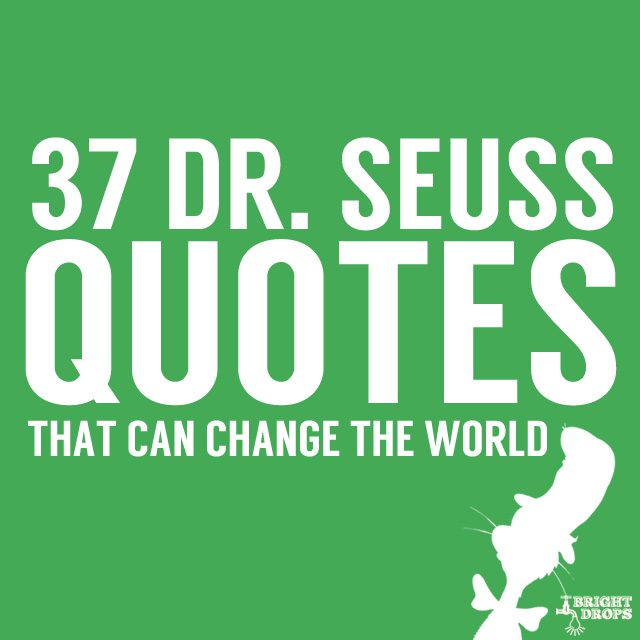
Dr. Seuss is an oft-quoted author that published over 40 books, many of which have been made into films, and have even been studied in university classrooms. This is a collection Seuss quotes that have the power to change the world if their message is heeded. Simple and poignant at the same time, that is… Continue Reading

Change happens. The only thing that is promised in life is change… and death and taxes if you ask Ben Franklin. Change can be a great thing. It propelled Barack Obama to the highest office in the land and it can also buy you a soda from the break room. Keep reading and you’ll find… Continue Reading

These positive quotes have the ability to shift your mindset so that you can be more effective and have a happier time. Use them for 30 days and then see how much has changed for the better in your own life.

Sometimes we have to see the funny side of life in order to keep going. With so much humor in the world, we’ve collected some hilarious life quotes from a wide range of famous writers, celebrities and thinkers from over the last couple of centuries and beyond.

These inspirational quotes for women, from women, will help to light a fire that will burn brightly for years to come.

Here are some of the best motivational quotes to get you up and get you moving. They’ll help you realize that nothing worth having is easy, but that you can enjoy the work involved in getting the prizes that you covet the most. Refer to these daily so that you get your mind in the… Continue Reading
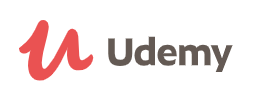

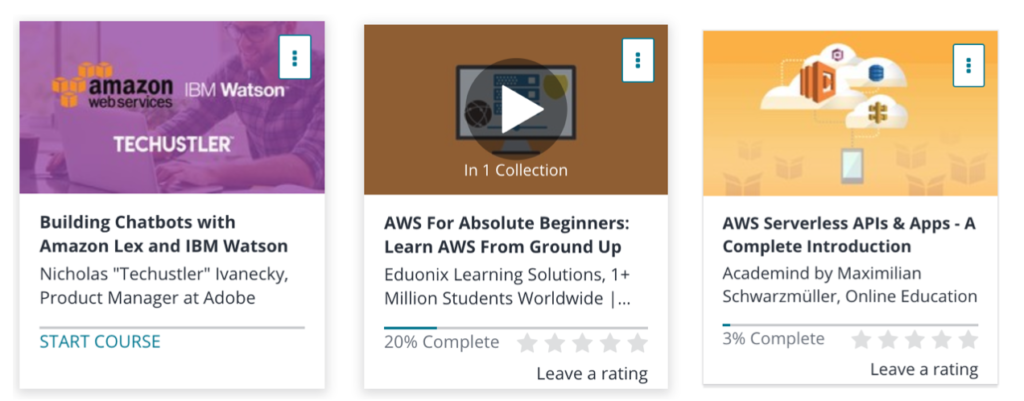
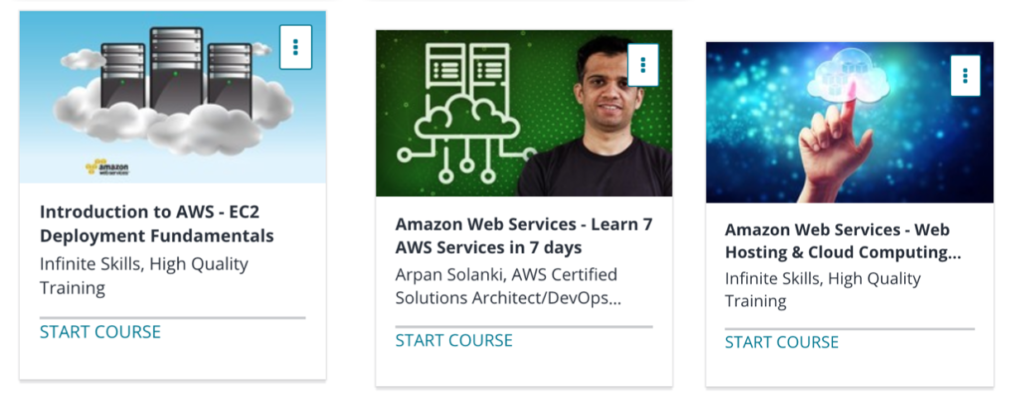
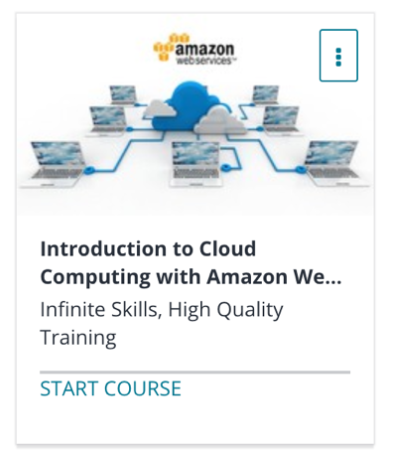
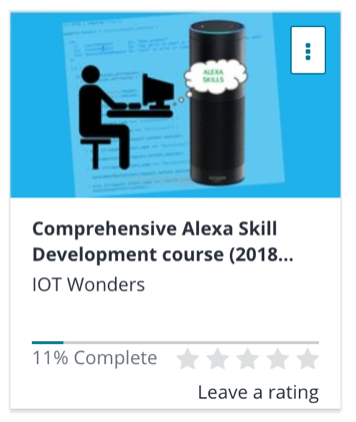










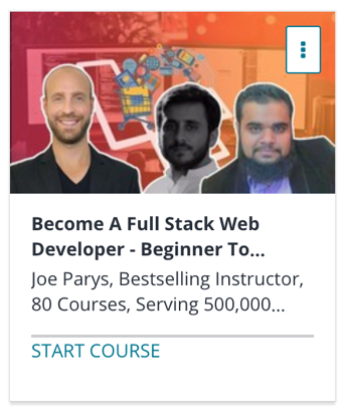



Have a friend on social media who's always reading 10 times as much as you? I feel your pain.

Consuming pop culture is my job. Well, writing about it is my job, but that makes keeping tabs on movies, television, podcasts, Twitter/Instagram feeds, and everything else a professional necessity. Yet, there's one high-protein item that always seems to be missing in my media diet: books. It's not that I don't read them—I've got two to three going at any given time—it's that I feel like I don't read them enough.
How do I know this? Fucking Goodreads.
I hardly remember joining Goodreads, but according to my account it happened in April 2010. Back then, before every social network felt like a data breach waiting to happen, it seemed easier to join any hot new online community—and then, once it went out of vogue, to never think of it again. I thought that's what would happen with Goodreads. I made a profile, logged a few books, added a few friends, and for a couple of months got really excited about tracking my progress and the progress of others. Then, perhaps enticed by the internet's next shiny object, I fell off. I stopped updating and didn't check in on my profile very often. But I didn't unsubscribe from the emails—and that's where the trouble started.
Every few days or weeks, just when I started feeling positive about my biblio advancements, one of these messages would come across the transom: "Updates from..." Upon opening it, I'd find out that someone who I knew had a full-time job and active social life had finished two novels in the time it'd taken me to get through the jacket blurbs on David Sedaris' latest essay collection. Deflation followed. Not only did I feel uninformed and slow, I felt somehow left out. I like talking about books, and thanks to Goodreads I had a constant reminder of all the great books I hadn't read and all the conversations I couldn't yet join. It was pure literary FOMO. (A point of clarity: I was also that sucker who tried to participate in Infinite Summer, the challenge to complete David Foster Wallace's behemoth Infinite Jest. That summer ended in nothing but infinite regret.)
This hasn't really stopped in the seven years since. I've learned to manage the disappointment I feel when I realize I haven't finished a half-dozen novels my pals have, but there's still a twinge of guilt. (It gets worse: Roxane Gay, who has like four jobs and writes books of her own, has read more than 900 books.) I started asking around; apparently lots of people had that friend on Goodreads: A high school classmate, a friend from an old job, whatever. I might've felt left out, but at least I wasn't alone.
I took my grievance to Goodreads itself. After writing to the company to lament that so many people seemed to have consumed the entire New York Times bestseller list in the time it took me to read one book, CEO/cofounder Otis Chandler offered sympathy, confessing that he only gets through about 20 books per year. "I wish I had time to read more," he wrote via email. "But with a busy job and three small children, I only have so much time." I felt better—then I remembered I read fewer books than Chandler in a given year and have no offspring to tend to.
Chandler's point wasn't to bookshame, though. "When a person joins," he continued, "they start to read more books." The site, then, serves as both a motivator and a recommendation engine for its 75 million users. People want to keep up with their friends, but through those friends they also discover books they want to read. That was definitely true—getting those Goodreads notifications definitely motivated me keep going, and I'd probably consumed more books since joining the site than I had before.
Get WIRED Access
Then Chandler brought up the Goodreads Reading Challenge, a section of the site where users can set goals for themselves. In 2018, 2.9 million people on the service set personal goals for themselves, and to hear Chandler tell it, each December participants celebrate hitting their goals. "Our advice with the Reading Challenge is to set a personal goal that fits with what's going on in your life and type of books you like to read," he wrote. "We hear from our members all the time that they value it for helping them read more."
Solid plan. So, OK, I'm gonna do it. I might not log it on Goodreads, where one of my friends is somehow halfway through a 150-book goal, but I'm going to do it. Twenty-five books in 2018. This can happen.
Five minutes after I made this promise, I opened my email to find a Goodreads newsletter waiting for me. Squelching the desire to archive, I opened it. There it was, right at the top: Lizzy Goodman's Meet Me in the Bathroom, the chronicle of early-2000s rock 'n' roll life in New York I'd been "currently reading" for months. I'd shelved it during a move and forgotten that I only ever got one chapter in before being distracted by some novel. Or some Twitter beef. Probably some Twitter beef. So you're it, Meet Me in the Bathroom; my account claims I've read three books already this year (that can't be right, can it?), and the next 22 start with you. And then maybe that copy of Underground Railroad I've been toting around. A little more protein might be just what the doctor ordered.
Get WIRED Access
Season 5, Ep 5 Triple Poit
Captain Sandrine Kirino from the Maria ship
War is an inhrently unstable interaction of three things: intense emotion, politics, and luck.
The Vedas are a large body of religious texts originating in ancient India. Composed in Vedic Sanskrit, the texts constitute the oldest layer of Sanskrit literature and the oldest scriptures of Hinduism. Hindus consider the Vedas to be apauruṣeya, which means "not of a man, superhuman" and "impersonal, authorless". Wikipedia
Online In Career Development

3D printing technologies are not new, but thanks to a recent convergence of simple-to-use design software, improving materials, and shrinking hardware costs, 3D printing is becoming mainstream. Creative individuals, entrepreneurs, teachers, surgeons and established businesses use 3D printing technologies to re-define art, medicine, product design and education. In the future, we will see the emergence of new business models and a new aesthetic as 3D printing technologies remove traditional manufacturing barriers of cost, time and skill. The electronics industry is adopting 3D printing to extend production capabilities that are scalable and complimentary with current manufacturing solutions. 3D printing technologies also open up new avenues for directly functionalizing component parts.InstructorsMelba KurmanMike O'ReillyPublication Year: 2014Earn 1 Professional Development Hour (PDH) for completing the webinar (form completion required)
English (United States)
Online In Career Development

3D-Printing or Additive Manufacturing has received significant media attention during the last five years. In 2012 the Economist published an article on this technology which stated that it will lead to a 3rd industrial revolution. A number of companies are now commercializing materials, design/software and 3D-Printers, and these are being used in a number of manufacturing sectors including aerospace, medical, and construction and consumer products. In China alone the 3D-Printer market is expected to be worth over 10Bn RMB by 2018, and the Government has recently initiated a policy to provide every school with 3D-printing capabilities. But what impact will 3D-printing have on the electronics packaging and manufacturing community? Will 3D-Printing be just hype, or is there hope that these technologies will impact the way we manufacture and package electronic systems, or are developments already being commercialized? Will 3D-Printing of electronic circuits or components be the next phase of the additive manufacturing revolution? This presentation will discuss the challenges for design tools, materials, and 3D-printing processes in the context of electronics manufacturing/packaging. In particular, printing and micro-assembly systems are required that can accurately deposit and cure both functional and structural materials and place/embed components in an integrated manner within a single platform. The performance and electrical behavior of printed conductive materials is also a challenge as they must meet the performance of materials currently used. And of course the overall quality and reliability of 3D-printed electronic systems must meet industry requirements. This presentation will detail the current status of 3D-printing for the manufacture of electronic systems, and provide some insights on how it may impact our community in the future.InstructorsChris BaileyChris Bailey is Professor of Computational Mechanics and Reliability at the University of Greenwich, London, United Kingdom. He received his PhD in Computational Modelling from Thames Polytechnic in 1988, and an MBA in Technology Management from the Open University in 1996. Before joining Greenwich in 1991, je worked for three years at Carnegie Mellon University (USA) as a research fellow in materials engineering.One of his main achievements with regards to EPS was helping to establish the Region 8 flagship conference ESTC (Electronics System-integration Technology Conference). He was the Programme Chair for the first conference held in Dresden, and was the General Chair for the 2008 conference in London. In 2007 he was the local chair for the IEEE EPS sponsored EuroSime conference held in London, and since 2009 have worked with the EuroSime team as co-editor of the proceedings and track chair for multi-physics modelling.Since 2010 he has been a member of the EPS (CPMT) Board of Governors. During his first term on the BoG, he also took on the role of Strategic Director for Student Programs with the aim of supporting students involved in EPS activities worldwide. Particular achievements include arranging financial support for student attendees at the International Spring Seminar on Electronics Technology (ISSE) as well as promoting student membership at events such as ECTC, EPTC and ESTC.Jie XueJie Xue is currently the Sr. director of Component Quality and Technology Group at Cisco Systems, Inc., San Jose, California. Her team is responsible for component technology development and qualification of ASIC, network processors and optical modules, as well as the development of advanced semiconductor and packaging technologies. Since joining Cisco in 2000, she has been working on developing high performance flip chip packaging, system-in-package, multi-chip modules, chip-scale-packaging for high reliability networking products. Prior to joining Cisco, Jie held several management and engineering positions in Motorola Inc., working on R&D and product development.Jie received a BS degree from Tsinghua University, a MS and Ph.D. from Cornell University. Her research has resulted in over 80 technical publications and conference presentations and 8 patents. She is an IEEE Fellow as well as IMAPS Fellow. She was the VP of Conferences at IEEE EPS (CPMT) (2010-2011) and VP of Technology since 2012.Publication Year: 2017Earn 1 Professional Development Hour (PDH) for completing the webinar (form completion required)
English (United States)
Online In Career Development

While Silicon has scaled aggressively by over a factor of a few thousand over the last six decades the progress in packaging has been more modest – a linear factor 4-5 in most cases. In this talk, we will examine the reasons for this lag and what we are doing to fix this imbalance. Packaging is undergoing a renaissance where chip-to-chip interconnects can approach the densities of on-chip interconnects. We will discuss the technologies that are making this happen and how these can change our thinking on architecture and future manufacturing. Specifically, we will discuss two embodiments: Silicon as the next generation packaging substrate, and Flexible electronics using fan-out wafer level processing. Finally, we’ll discuss how these developments can help put some intelligence into Artificial Intelligence and bring about changes in Medical Engineering.InstructorSubramanian S. IyerSubramanian S. Iyer (Subu) is Distinguished Professor and holds the Charles P. Reames Endowed Chair in the Electrical Engineering Department at the University of California at Los Angeles and is Director of the Center for Heterogeneous Integration and Performance Scaling (CHIPS). Prior to that he was an IBM Fellow. His key technical contributions have been the development of the world’s first SiGe base HBT, Salicide, electrical Fuses, embedded DRAM and 45nm technology node used to make the first generation of truly low power portable devices. He also was among the first to commercialize bonded SOI for CMOS applications through a start-up called SiBond LLC. He has published over 300 papers and holds over 70 patents. He was a Master Inventor at IBM. His current technical interests and work lie in the area of advanced packaging constructs for system-level scaling and new integration and computing paradigms as well as the long-term semiconductor and packaging roadmap for logic, memory and other devices. He has received several outstanding technical achievements and corporate awards at IBM. He is an IEEE Fellow, an APS Fellow and a Distinguished Lecturer of the IEEE EDS and EPS as well as it treasurer of EDS and a member of the Board of Governors of IEEE EPS. He is also a Fellow of the National Academy of Inventors. He is a Distinguished Alumnus of IIT Bombay and received the IEEE Daniel Noble Medal for emerging technologies in 2012. Publication Year: 2018Earn 1 Professional Development Hour (PDH) for completing the webinar (form completion required)
English (United States)
Online In Career Development

This course covers the detailed material considerations required for achieving high reliability for lead-free solder joints. The reliability discussed includes joint mechanical properties, development of type and extent of intermetallic compounds (IMC) under a variety of material combinations and aging conditions and how those IMCs affect the reliability. The failure modes, thermal cycling reliability, and fragility of solder joints as a function of material combination, thermal history, and stress history will be addressed in details, and novel alloys with high reliability will be presented. The emphasis of this course is placed on the understanding of how the various factors contributing to the failure modes, and how to select proper solder alloys and surface finishes for achieving high reliability.InstructorDr. Ning-Cheng LeeNing-Cheng Lee is the Vice President of Technology of Indium Corporation. He has been with Indium since 1986. Prior to joining Indium, he was with Morton Chemical and SCM. He has more than 30 years of experience in the development of fluxes and solder pastes for SMT industries. In addition, he also has very extensive experience in the development of underfills and adhesives. He received his PhD in polymer science from University of Akron in 1981, and BS in chemistry from National Taiwan University in 1973.Ning-Cheng is the author of “Reflow Soldering Processes and Troubleshooting: SMT, BGA, CSP, and Flip Chip Technologies” by Newnes, and co-author of “Electronics Manufacturing with Lead-Free, Halogen-Free, and Conductive-Adhesive Materials” by McGraw-Hill. He is also the author of book chapters for several lead-free soldering books. He received 1991 award from SMT Magazine and 1993 and 2001 awards for best proceedings papers of SMI or SMTA International Conferences, 2008 and 2014 awards from IPC for Honorable Mention Paper – USA Award of APEX conference, and 2010 Best Paper Award of SMTA China South Conference. He was honored as 2002 Member of Distinction from SMTA, 2003 Lead Free Co-Operation Award from Soldertec, 2006 Exceptional Technical Achievement Award from CPMT, 2007 Distinguished Lecturer from CPMT, 2009 Distinguished Author from SMTA, 2010 Electronics Manufacturing Technology Award from CPMT, 2015 IEEE Senior Member, 2015 Founder’s Award from SMTA, and 2017 IEEE Fellow. He has served on the board of governors for CPMT and SMTA board of directors. Among other editorial responsibilities, he serves as editorial advisory board of Soldering and Surface Mount Technology, Global SMT & Packaging and as associate editor for IEEE Transactions on Components Packaging Manufacturing Technology. He has numerous publications and frequently gives presentations, invited to seminars, keynote speeches and short courses worldwide on those subjects at international conferences and symposiums. Publication Year: 2018Earn 1 Professional Development Hour (PDH) for completing the webinar (form completion required)
English (United States)
Online In Career Development, Leadership, and 1 more (Show All)

Leadership can be defined as the ability of an individual to influence, motivate, and enable others to contribute toward the effectiveness and success of the organizations of which they are members. Leadership is not dependent on title or formal authority. All too often we think of leadership as something we will develop and apply later rather than earlier in our career. This applies to both leadership within our chosen technical discipline and leadership of our profession. In the early stages of a career, most people naturally focus on the technical aspects of their career. They begin their careers applying the technical disciplinary knowledge and skills they acquired in college and focus on those aspects that will ensure promotion, tenure, and success early in their career. However, leadership is something that should be considered and fostered early and often throughout our entire professional career. Leadership is a subject that has been studied, discussed, and debated across a wide variety of disciplines for centuries. There are numerous books, articles, and self-improvement courses on the subject so many that the interested student of the broad subject of leadership might at first be discouraged. The purpose of this tutorial is not to be exhaustive but instead to provide a practical guide to leadership while providing references to some of the seminal works that form the foundation for both the theory and practice of leadership.Instructor Barry L. ShoopBarry L. Shoop is Professor of Electrical Engineering and Deputy Head of the Department of Electrical Engineering and Computer Science at the United States Military Academy at West Point. Currently as Professor and Deputy Head he is responsible for an undergraduate academic department supporting ABET accredited programs in electrical engineering, computer science, and information technology. He received the B.S. from the Pennsylvania State University, M.S. from the U.S. Naval Postgraduate School, and Ph.D. from Stanford University, all in electrical engineering. He is a Senior Member of the IEEE and a Fellow of both the Optical Society of America and the International Society for Optical Engineering.Publication Year: 2010ISBN: 978-1-4244-6202-5
English (United States)
Online In Sensors, Career Development, and 2 more (Show All)

An increasing number of sensors are used in automotive applications. Familiar sensors applications include air bags and tire pressure sensors. New automotive safety features include improved self-diagnostics, crash avoidance technology, and advanced driver assistance. This translates into increase use of image sensors, LiDAR, and radar. Multiple combinations of sensors are anticipated. What types of semiconductor packages are used in these automotive electronics and what are the future challenges as new package types are adopted? This presentation discusses some of the opportunities in automotive packaging and the challenges in meeting automotive specifications. InstructorJan VardamanJan Vadarman is president and founder of TechSearch International, Inc., which has provided market research and technology trend analysis in semiconductor packaging since 1987. She is the co-author of How to Make IC Packages (by Nikkan Kogyo Shinbunsha), a columnist with Printed Circuit Design & Fab/Circuits Assembly, and the author of numerous publications on emerging trends in semiconductor packaging and assembly. She is a senior member of IEEE CPMT (now EPS) and is an IEEE CPMT (EPS) Distinguished Lecturer. She is a member of SEMI, IMAPS, and MEPTEC. She received the IMAPS GBC Partnership award in 2012. Before founding TechSearch International, she served on the corporate staff of Microelectronics and Computer Technology Corporation (MCC), the electronics industry’s first pre-competitive research consortium. Publication Year: 2017Earn 1 Professional Development Hour (PDH) for completing the webinar (form completion required)
English (United States)
Online In Career Development, Computing, and 3 more (Show All)
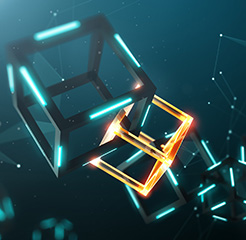
This module provides ways to think about how the architecture of blockchain technologies shapes governance processes and the forging and maintenance of a legal system. Similar to the Internet, blockchain technologies challenge our ideas about the relation between technology, governance, and the rule of law. Blockchain-based systems could potentially impact human rights provisions such as the right to nationality and to privacy. After completing this module, participants will have gained insight into: The relation between blockchain technologies, governance, and the rule of law, The potential impact of blockchain technologies on the human rights of nationality and privacy, The overall findings of the five modules of this online course.InstructorsQuinn DuPontQuinn DuPont studies human and social dimensions of cybersecurity, cryptography, and code. He is currently a postdoctoral Research Associate at the School of Information, University of Washington. He has a PhD in Information Science (Toronto), and is an ALA-accredited librarian (Western), with a decade of industry experience as a Senior Information Specialist at IBM, an IT consultant, and a usability and experience designer. His current research focuses on Bitcoin, cryptocurrencies, and blockchain technologies. He is a member of the Standards Council of Canada, ISO, and IEEE Blockchain committees. His book, Cryptocurrencies and Blockchains (Polity), is a scholarly survey of cryptocurrencies and blockchain technologies in society.Wessel ReijersWessel Reijers studies philosophy and ethics of technology and has a strong interest in the study of financial and governance technologies. He is currently a PhD researcher at the ADAPT Centre, School of Computing, Dublin City University in Ireland. His current research focuses on the integration of ethics in research and innovation activities. One outcome of this research is the Ethics Canvas, which can be used by researchers to discuss ethical impacts of their work. He has published in several academic journals on the topics of hermeneutic philosophy of technology, blockchain technologies, social contract theory, the digital commons and ethics in research and innovation.Publication Year: 2018
English (United States)
Online In Career Development, Leadership, and 1 more (Show All)
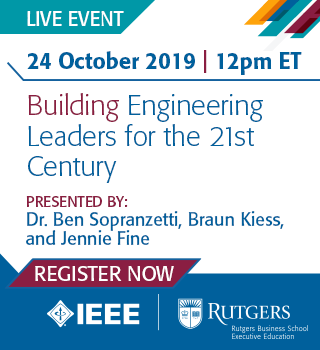
How do you identify emerging engineering leaders in your company?What do you do to help them learn the business skills they need to be successful in leadership roles?In order to lead effectively, your leaders need more than engineering skills. They need to work effectively with business groups across the organization. How do you make sure your next generation of leaders has these skills?You are invited to participate in a live complimentary IEEE webinar entitled, “Building Engineering Leaders in the 21st Century,” presented by Dr. Ben Sopranzetti, Braun Kiess, and Jennie Fine.“Building Engineering Leaders in the 21st Century” will:Show you how to bridge the gap between business and engineering as your team prepares for growth into management rolesOffer modern-day solutions, based on real world business and engineering best practices, that will allow for you to cultivate and grow your company’s emerging talent into a leadership roleInclude a live Q&A session with the presentersBrought to you by IEEE Educational Activities and Rutgers Business School Executive Education.PresentersBen J. SopranzettBen J. Sopranzetti is a Professor of Finance and Assistant Chairman of the Department of Finance and Economics at Rutgers Business School. He received his Ph.D. in finance from the University of Illinois at Urbana-Champaign in 1995. He has over 25 years of international experience in building, valuing, and selling business enterprises. He is an expert in the area of Business Valuation, Investment Banking, Private Equity, and Venture Capital. Sopranzetti is widely respected as a master teacher, and has an outstanding reputation for designing and delivering innovative programs for financial institutions and corporate clients. He is particularly well regarded for his cutting-edge work on valuation, mergers and acquisitions, private equity, cross-cultural negotiations and high-level executive training.Sopranzetti is the recipient of eighteen awards for excellence in teaching. He is a founding member of the Rutgers University Teaching Excellence Center.In 2008, he was honored by BusinessWeek as one of their 21 ""Favorite Professors."" Sopranzetti is the advisor for the Little Investment Bankers of Rutgers (LIBOR), and places 30-40 students per year in front office jobs on Wall Street. In the course of his career, he has been involved in the job placement of over 500 students.Sopranzetti serves on several corporate boards and is a highly regarded valuation consultant and trainer at numerous Wall Street investment banks, including Bank of America, Bank of China, Citibank, CFSB, Goldman Sachs, HSBC, JPMorgan, Morgan Stanley, Rothschild, UBS, and others.In 2000, he founded Innovative Financial Solutions, a boutique investment banking and advisory services firm in Beijing, China, where he served as a managing partner. He sourced, negotiated and closed 19 deals between $25MM and $500MM. In 2006, he was a co-founder of the BEST Institute (Business, Engineering, Science and Technology) at Rutgers University. Since 2009, he has started four companies, and is currently a senior partner at Partners2Market, a high-powered valuation and advisory services company.Braun C. KiessBraun C. Kiess is a successful financial executive, serial entrepreneur, educator and investor. With over 20 years of experience in a diverse range of industries, Kiess’ professional roles have included: Chief Executive Officer (CEO), Chief Financial Officer (CFO), Vice President of Sales & Marketing, and Director of Business Development. Kiess is currently the Co-founder and Chief Financial Officer of RST Automation LLC, the Co-founder and Chief Executive Officer of Pleasant Run Structures, the Founder and Chairman of Rainbow Direct, the Co-founder and Managing Director of Partners2Market LLC (D.B.A. Piermont Valuation Group) and the Co-founder and Managing Partner of Readington Brewery & Hop Farm. To date, Kiess has been a founder or investor in over a dozen start-up companies.Kiess sits on multiple corporate boards and teaches for Rutgers Business School at the undergraduate and graduate level. In addition to being a member of the Rutgers faculty, Kiess is a widely recognized expert on Financial Statement Analysis and Financial Strategy. He is a frequent instructor for Rutgers Business School’s Executive Education and Executive MBA programs.Kiess regularly consults to Fortune 500 companies and IP-based startups on valuation and has testified as an expert witness in forensic valuation and litigation support cases in federal court. Kiess and Sopranzetti are currently coauthoring a book on valuation. Kiess holds a Bachelors of Science degree in Finance (Summa Cum Laude) from Rutgers University and has Masters in Business Administration (MBA) degrees from both Columbia Business School and London Business School."Jennie FineEDP579_fine.jpg"Jennie Fine is the Program Manager for the Rutgers Business School Executive Education Program. Jennie is a seasoned learning and development project manager with substantial experience in all areas of instructional design, project management, and educational program development. She has expertise in adult learning and educational program management, both virtual and classroom based. Jennie has demonstrated success in training and assessment, learning systems, content development, communications, client services, organizational change management, new sales and customer retention, product implementation, usage building, and customer development. Jennie is a specialist at working with large teams of stakeholders to reach alignment and develop clear action plans.Jennie FineJennie Fine is the Program Manager for the Rutgers Business School Executive Education Program. Jennie is a seasoned learning and development project manager with substantial experience in all areas of instructional design, project management, and educational program development. She has expertise in adult learning and educational program management, both virtual and classroom based. Jennie has demonstrated success in training and assessment, learning systems, content development, communications, client services, organizational change management, new sales and customer retention, product implementation, usage building, and customer development. Jennie is a specialist at working with large teams of stakeholders to reach alignment and develop clear action plans.Publication Year: 2019
English (United States)
Online In Career Development

This webinar proposes Moore’s Law for Packaging to replace Moore’s Law for ICs, as this is seen as coming to an end. Moore’s Law for ICs is about scaling transistors to ever smaller sizes, from node to node and interconnecting and integrating these to result in more transistors in smaller chips at lower cost from 300 mm wafers. As transistor scaling and integration comes to an end due to physical, material and electrical limitations, Moore’s Law for Packaging (MLP) can be viewed as interconnecting and integrating smaller chips with the highest transistor density and highest performance at the lowest cost. Package or system scaling is proposed to be one and the same, as the end goal of packaging is a system. Just as Moore’s Law for ICs has two components: number of transistors and cost of each transistor, Moore’s Law for Packaging is proposed to have two components as well: the number of interconnections or I/Os and the cost of each I/O. This webinar lays the ground work for Moore’s Law for Packaging by showing how I/Os have evolved from one package family node to the next, starting with <16 I/Os in 1960s to the current silicon interposers with about 200,000 I/Os. It proposes a variety of ways to extend Moore’s Law such as extending Si interposers and beyond, using glass in panel embedding. As Moore’s Law for Electronic Packaging comes to its own end, this article proposes 3D opto-electronic packaging as the next Moore’s Law for Packaging.InstructorIRao TummalaProf. Rao Tummala is a Distinguished and Endowed Chair Professor Emeritus at Georgia Tech in USA. He is well known as an industrial technologist, technology pioneer, and educator. Prior to joining Georgia Tech, he was an IBM Fellow, pioneering such major technologies as the industry’s first plasma display and industry’ first 100- chip MCM with leading-edge RDL, flipchip and liquid cooling, now called 2.5D. He is the father of LTCC and System-on-Package(SOP) technologies. As an educator, Prof. Tummala was instrumental in setting up the largest and most comprehensive Academic Center in System-On-Package vision for Electronic Systems, funded by NSF as the first and only NSF Engineering Research Center in US in Packaging at Georgia Tech. Prof. Tummala pioneered an integrated approach to research, education and industry collaborations with more than 100 companies in US, Europe, Japan, Korea, Taiwan and China and producing about 1200 Ph.D and MS students . He received many industry, Academic and Professional Society awards including Distinguished Alumni of Illinois, Indian Institute of Science and the highest Faculty award from Georgia Tech—The Distinguished Faculty. He has published about 800 technical papers and invented many technologies that resulted in over 100 patents. He wrote the first modern textbook in packaging,Microelectronics Packaging Handbook(1988); wrote the 1st undergrad textbook, Fundamentals of Microsystem Packaging(2001); and the 1st book introducing the concept of SOP with Prof. Swaminathan, Introduction to System-on-Package( 2006). He was Past President of IEEE EPS and IMAPS. He is an IEEE Fellow and member of National Academy of Engineering in US.Publication Year: 2019Earn 1 Professional Development Hour (PDH) for completing the webinar (form completion required)
English (United States)
Online In Career Development, Leadership, and 1 more (Show All)

One of the biggest challenges engineers face in their career is the ability (and confidence) to network and build relationships. During this course, engineering career coach Anthony Fasano will: define what networking really is and why it is critical to engineering career development; provide strategies to build lasting relationships; discuss who you should network with; suggest where you can find these other professionals; discuss social networking: what is it and why must you be doing it in your career; help you to let go of beliefs that you may have about networking that are holding you back; and offer strategies for overcoming barriers such as low confidence and English as a second language.InstructorAnthony FasanoAnthony Fasano received B.S. and M.S. in Civil Engineering from Lafayette College and Columbia University. After becoming a partner at an engineering firm at the age of 27, he realized that his success was related largely to the development of his non-technical skills. Mr. Fasano decided to transition his career from designing to inspiring engineers to develop the nontechnical skills crucial to career success. Anthony has written a bestselling book entitled Engineer Your Own Success: 7 Key Elements to Creating an Extraordinary Engineering Career. Publication Year: 2012ISBN: 1-4673-3180-5
English (United States)
Health
| Back to Life Videos | https://www.backtolifesystem.com/btlty/
ATTENTION: Your purchase of the Back to Life system will appear on your credit card or bank statement as a charge by our secure retailer: CLKBANK*COM |
|
PC2
PC2 System Download Page |
http://pc2.ecs.csus.edu/secret.960-0101.html | |
| Monika’s notes on PC2 | https://docs.google.com/document/d/1Gqf9-OoBFNNjXiVGpG3nev9cyY69jOZW_OeXy8lmPhU/edit | My Drive/AWS |
| AWS at CISDR | http://mcmprogramming.com/mo.meven/presentations/2019/MonikaMevenkampAWSatCISDR.pdf | |
| https://mo-meven.mcmprogramming.com/wp/presentation/ |
Publications
| CSTA | https://drive.google.com/drive/folders/1AtihEdxAj7dEgfRQPikZfqm1SHzwPWHx |
| ACM | acm.org |
| AAA | |
| Robotics | |
| PC World | |
| Make | |
| Children Code | |
| Servo | |
| IEEE | |
| New Scientist | |
| Nuts n Bolts | https://preview.hs-sites.com/_hcms/preview/content/23837808299?portalId=2436516&_preview=true&cacheBust=1577383891391&preview_key=pXMMPzwH&utm_source=hs_email&utm_medium=email&utm_content=81282757&_hsenc=p2ANqtz-9JsrAiA_YV7yuQdP5QAht54n76vKXdalcMShZKBkxn4ExP3QPWH6w4movy8cevI8Bt8wSheOjRO5vclEglpFycxeNnMg&_hsmi=81282757 |
| National Geographic | |
| New Scientist Discovery tours | https://mailchi.mp/a6b32f11c846/announcement-brand-new-tours-launched-3696719?e=ea98f4fbd3 |
| https://www.newscientist.com/subject/physics/ | https://www.newscientist.com/subject/physics/ |
thetechnodepot.com
| My Drive | https://drive.google.com/drive/folders/1FElHrYANA22B2GkEFYtJNqIq5i8run1e |
Applied Sciences
| Chem-Tech: DIY mass spectrometer measures potassium in dietary salt substitute | https://docs.google.com/document/d/1atpUuQHSuFVGKpuJx96TXi24GK7aQduyEpiCB_nB8Ss/edit#https://docs.google.com/document/d/1atpUuQHSuFVGKpuJx96TXi24GK7aQduyEpiCB_nB8Ss/edit# | |
WordPress
| The Simple Guide to WordPress Image Sizes | https://visualcomposer.com/blog/wordpress-image-sizes-guide/ | |
Lego
| LEGO Great Ball Contraption GBC at Fanabriques 2019, Colmar, Franc | https://www.youtube.com/watch?v=9b2dxc1QalM&feature=push-fr&attr_tag=BLsqcsZas1QcUPEk%3A6 |
| LEGO Great Ball Contraption GBC at Mega Bricks in De Meenthe in Steenwijk, walk around | https://www.youtube.com/watch?v=HuxYMjJFgmc&feature=push-u-sub&attr_tag=v5fSgYQi_oIzi923%3A6 |
| LEGO Great Ball Contraption at Mega Bricks 2019 in De Meenth in Steenwijk NL | https://www.youtube.com/watch?v=h2MRlRraKZI&feature=push-u-sub&attr_tag=sqxhFh4H5GnbK1w7%3A6 |
Previously in Progress
| Grading
Java: ArrayBasics APCSA: Goodies Algo: Percolation and 8-Puzzle |
|
| Budget - Home | Budget - CRC |
| OgreBot
Motors connections, operation and programming Encoders |
ROS
CRC for all |
| Lesson Plans, PS Learning, websites | Curriculum |
| Italian | Culture and Locations of interest |
| Javascript | ReactNative |
| Linux - Ubuntu - Raspbian | toptechboy |
| EV3 Organization of small extra pieces | Calculus |
| EV3 Certification | Physic
Graph theory Number theory |
| Clean up google drive
Clean up dropbox |
Find the leak/bleeding wound |
| https://sites.google.com/site/tuftsroboticsclub/current-projects/firefighting-robot/2010-firefighting-development | The effective engeer |
| Princeton Job Opportunities | |
| Recipes folder | https://drive.google.com/drive/folders/1bL85_NaS1xXIUYquNOJXVtWRewwf5VhP |
| Recipes links |
| CSTA | ||
| Meeting 02 December 03 | https://docs.google.com/document/d/18O5f_MtfCJ1mJtrO-iZaULMhuL2JyjL8xd_jDWxqI2s/edit | My drive |
| Google group | https://groups.google.com/forum/?utm_medium=email&utm_source=footer#!forum/cstanj | Google server |
Buried Treasure chess
| My Drive/Buried Treasure/Algorithms/ https://docs.google.com/document/d/1Zv1sIYHCVQq1D2TvnkEIR7a7C2rYrd54L3uNv4xyn1E/edit# | ||
| Algorithms
Testing Lab |
https://w3.cs.jmu.edu/lam2mo/cs240_2014_08/lab06-testing.html | CS 240
Data Structures and Algorithms - Fall 201 |
| Problem Solving with Algorithms and Data Structures using C++ | https://runestone.academy/runestone/books/published/cppds/LinearBasic/PalindromeChecker.html | 3.18. Palindrome-Checker |
Google groups - google server
Women in IT
| Association for
Computing Machinery ACM-W supporting, celebrating and advocating for Women in Computin |
https://women.acm.org/category/newsletter/ |
Expenses, Budget, and Analysis
|
Jump to navigationJump to search
| Lodgepole pine | |
|---|---|
 |
|
| Pinus contorta subsp. contorta in Anacortes Community Forest Lands, Washington | |
| Scientific classification |
|
| Kingdom: | Plantae |
| Clade: | Tracheophytes |
| Division: | Pinophyta |
| Class: | Pinopsida |
| Order: | Pinales |
| Family: | Pinaceae |
| Genus: | Pinus |
| Subgenus: | P. subg. Pinus |
| Section: | P. sect. Trifoliae |
| Subsection: | P. subsect. Contortae |
| Species: |
P. contorta
|
| Binomial name | |
| Pinus contorta |
|
| Subspecies | |
|
4, see text |
|
 |
|
Distribution map:
|
|
Pinus contorta, with the common names lodgepole pine and shore pine, and also known as twisted pine,[2] and contorta pine,[2] is a common tree in western North America.[3] It is common near the ocean shore and in dry montane forests to the subalpine, but is rare in lowland rain forests.[4][5] Like all pines (member species of the genus Pinus), it is an evergreen conifer.
There are four subspecies of Pinus contorta, and one of them is sometimes considered to have two varieties.[6] The subspecies are sometimes treated at the rank of variety.[2][7][8]
Depending on subspecies, Pinus contorta grows as an evergreen shrub or tree. The shrub form is krummholz and is approximately 1 to 3 m (3 to 10 ft) high. The thin and narrow-crowned tree is 40 to 50 m (130 to 160 ft) high and can achieve up to 2 m (7 ft) in diameter at chest height.[7] The murrayana subspecies is the tallest. The crown is rounded and the top of the tree is flattened. In dense forests, the tree has a slim, conical crown. The formation of twin trees is common in some populations in British Columbia. The elastic branches stand upright or overhang and are difficult to break. The branches are covered with short shoots that are easy to remove.[5][21][22]
The species name is contorta because of the twisted, bent pines found at coastal areas and the tree's twisted needles.[13][23][24] Pinus contorta is occasionally known under several English names: black pine, scrub pine, and coast pine.[25][26] P. contorta subsp. latifolia will hybridise with the closely related jack pine (Pinus banksiana).
The egg-shaped growth buds are reddish-brown and between 20 and 30 mm (3⁄4 and 1 1⁄4 in) long. They are short pointed, slightly rotated, and very resinous. Spring growth starts in beginning of April and the annual growth is completed by early July. The dark and mostly shiny needles are pointed and 4 to 8 cm (1 1⁄2 to 3 in) long and 0.9 to 2 mm (0.04 to 0.08 in) wide. The needle edge is weak to clearly serrated. The needles are in pairs on short shoots and rotated about the shoots' longitudinal axes. In Alberta above 2,000 m (6,600 ft), 1 to 5 needles occur per short shoot. A population with a high proportion of three-needled short shoots occurs in the Yukon. Needles live an average of four to six years, with a maximum of 13 years.[21]
The cones are 3–7 centimetres (1–3 in) long. The cones have prickles on the scales.
Many populations of the Rocky Mountain subspecies, P. contorta subsp. latifolia, have serotinous cones. This means that the cones are closed and must be exposed to high temperatures, such as from forest fires, in order to open and release their seeds.[27] The variation in their serotiny has been correlated with wildfires and mountain pine beetle attacks.[28] The cones of the coastal Pacific subspecies, P. contorta subsp. contorta, are typically non-serotinous,[26] and those of the inland Pacific subspecies, P. contorta subsp. murrayana, are completely non-serotinous.[29]
Pinus contorta is a fire-dependent species, requiring wildfires to maintain healthy populations of diverse ages. The bark of the lodgepole pine is fairly thin, minimizing the tree's defense to fire; however, the heat of fire opens the cones to release the seeds. This allows the species to regenerate and maintain its place in the forest habitat.[30] One plant community in which Pinus contorta is found is the closed-cone pine forest of coastal California.
Excessive wildfire prevention disrupts the fire ecology. The stands are usually so densely populated that the trees self-thin, or out-compete each other, leaving dead trees standing. These become a dry ladder fuel that can accelerate the fire to the crown of living trees. When the fire reaches the crowns of the trees, it can jump from tree to tree and becomes relatively unstoppable.
The natural fire regime for this species is primarily driven by climate. The fires occur most often after years of drought. Pinus contorta occurs from the upper montane to the subalpine region. These types of forests experience a lot of moisture in the form of snow in the winter due to their altitude. The density of the tree stand also prohibits the establishment of an understory. With all of that being said, the likelihood of a surface fire occurring is rare. Thus, infrequent but severe fires dominate this species.[30]
An example of the climate that plays a huge role in the fire regime of Pinus contorta is quite complex. There are three different oscillations that play a major role in droughts. These are the Pacific Decadal Oscillation (PDO), Atlantic Multi-decadal Oscillation (AMO) and El Nino (ENSO). A combination of these oscillations being in effect (+) or not in effect (-) have a global effect on the water available to these forests. So when the AMO +, ENSO – and PDO –, there is going to be a drought and likely a severe subalpine fire.[31]

Suillus tomentosus, a fungus, produces specialized structures called tuberculate ectomycorrhizae with the roots of lodgepole pine (Pinus contorta var. latifolia). These structures have been shown to be the location of concentrations of nitrogen-fixing bacteria which contribute a significant amount of nitrogen to tree growth and allow the pines to colonize nutrient-poor sites.[32][33]
This species is attacked by blue stain fungus (Grosmannia clavigera), distributed by the mountain pine beetle from its mouth.
A study released in 2011 concluded that Pinus contorta could experience significant reductions in distribution due to climate change by the late 21st century.[34][35]

Tree plantations of Pinus contorta have been planted extensively in Norway, Sweden and UK for forestry, such as timber uses.
Lodgepole pine is named for its common use as structural poles for the Native American tipi shelter. A typical tipi is constructed using 15 to 18 pines. The long, straight, and lightweight characteristics of the species made it ideal for horse transport in nomadic Plains buffalo hunting cultures. Tribes made long journeys across the Great Plains to secure lodgepole pines that only grew in mountainous areas. In Minnesota, other species such as red pine would be used in tipis, though they were generally thicker, heavier, and more cumbersome to transport than Pinus contorta.
Pinus contorta is still used by many today for erecting tipis on American Indian reservations, at powwows, and at private homes. The trees may be harvested for tipi poles in U.S. National Forests, provided the harvester secured a permit to cut living trees for ceremonial or traditional purposes. The Bighorn Mountains, the Black Hills, and the Medicine Bow Mountains are popular tipi pole harvesting areas for Native Americans living on Plains Indians reservations in North and South Dakota, and immigrant tipi enthusiasts.
The indigenous peoples of the Pacific Northwest and of California used different parts of the plant internally and externally as a traditional medicine for various ailments.[36]
Pinus contorta is cultivated as an ornamental tree by the horticulture industry. Plant nurseries grow Pinus contorta subsp. contorta and Pinus contorta subsp. murrayana for use in traditional and wildlife gardens, and as smaller selections of the native plant for natural landscaping. The Shore pine's (ssp. contorta) smaller varieties and cultivars are also used in container gardening, including as large bonsai specimens.
Cultivars of this species include:
The cultivar ‘Chief Joseph’ has gained the Royal Horticultural Society’s Award of Garden Merit.[37][38]
Lodgepole pine is the Provincial tree of Alberta, Canada.
Pinus contorta is a serious invasive species of wilding conifer in New Zealand, along with several other western North American pine species. It is listed on the National Pest Plant Accord and is prohibited from sale, commercial propagation, and distribution.
| Wikimedia Commons has media related to: |
| Wikispecies has information related to Pinus contorta |
Most of us were bored at some museum at least once in our lives - except this guy! France-based photographer Stefan Draschan always keeps himself entertained at famous art galleries with his creative photography ideas.
One of those projects is “People matching famous paintings”. Although at first Draschan’s cool pictures seem perfectly staged, the secret behind them is patience. The photographer enjoys visiting different museums mostly in Paris, Vienna, and Berlin where he waits for visitors to suddenly match with a piece of classical art in a funny way. The result of his bright idea is these humorous and unique pictures of unexpected harmony between people and the classical paintings they’re facing. It’s usually the outfits that match the art, but there are also people who match with the paintings because of their hairstyles and colors, or even beards.
Scroll down to see this ongoing project for yourself and beware – Stefan Draschan might be somewhere out there “hunting” for you!ng” for you!
More info: stefandraschan.com



https://www.instructables.com/id/Thermistor-Sensor-Module-Interface-With-Arduino/
Description:
Thermistor Sensor Module is used to sense temperature and convert it into output signals. It is associated with both analog output pin and digital output pin labelled as AO and DO respectively on the board. Thermistor Sensor Module is made of semiconductor materials. Basically thermistor sensors are mostly Negative Temperature Coefficient (NTC), which means NTC thermistors will have their electrical resistance decreased when subjected to an increase in body temperature. This module has a potentiometer knob that can be adjusted to change the sensitivity of thermistor towards temperature.
Specifications:
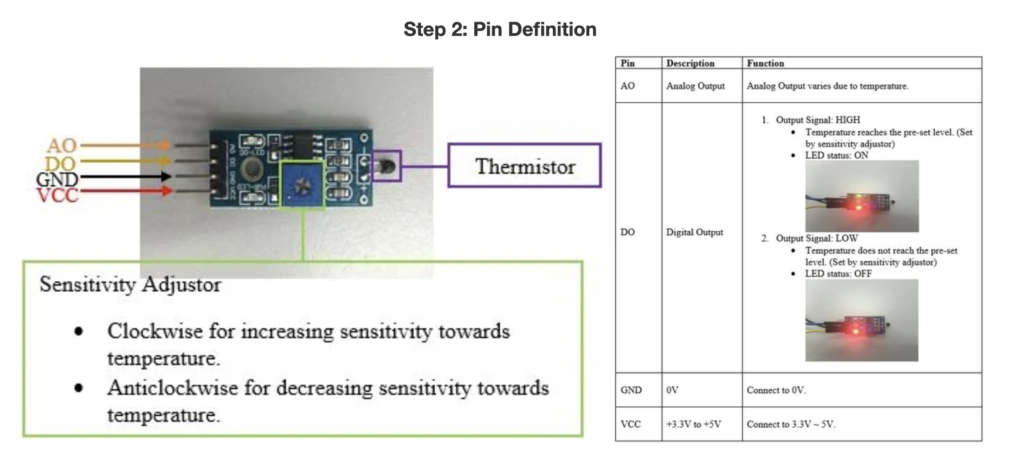

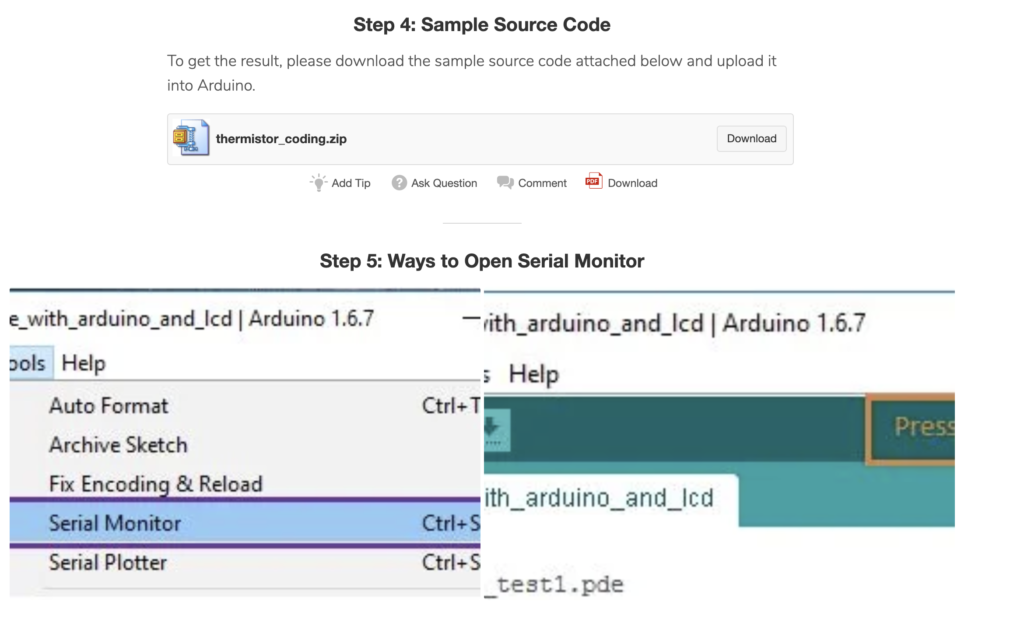
https://hds.harvard.edu/academics/degree-programs
https://join.shopkidpreneurs.com/pre-3-2?uncoil_ai_entity=
Does Your Kid Know—Really Know—They Can
Answer “Business Owner” When People Ask
What They Want To Be When They Grow Up?
The ability to measure and record ambient light levels is a common and useful sensing function for many IoT projects. Display backlight dimming is one popular example. In this tutorial, Robin first explains how to set up the Sparkfun TEMT6000 light sensor in Digi-key’s DK IoT Studio using the proper elements and linking configurations to send light level data via Bluetooth to a smart phone.
Additional Resources:
Adafruit Huzzah32 development board – https://www.digikey.com/short/p0bjzh
Sparkfun TEMT6000 Light Sensor – https://www.digikey.com/short/pvzdcp
How to Connect a TEMT6000 Light Sensor to DK IoT Studio https://www.digikey.com/en/maker/blog...
Digi-Key’s Blog – TheCircuit https://www.digikey.com/en/blog
Connect with Digi-Key on Facebook https://www.facebook.com/digikey.elec...
And follow us on Twitter https://twitter.com/digikey
DK IoT Studio https://www.digikey.com/en/resources/...
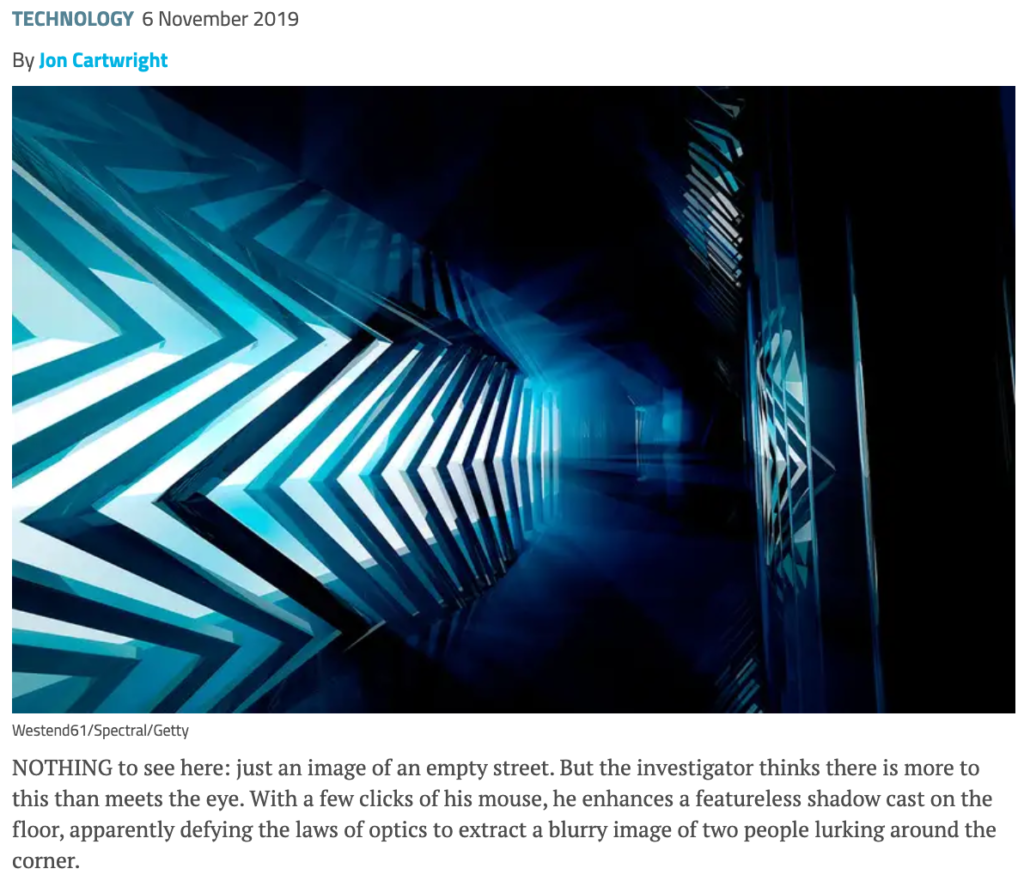
Technical wizardry like this seems far-fetched. But this isn’t CSI. The investigator is a computer scientist not a detective, and those characters are graduate students not suspects. More importantly, this technology is real, and it is being developed in labs right now.
The science of seeing around corners is new, fast-moving and breathtaking. We are discovering that the shadows are full of visual information that our eyes can’t see. Now, as people develop clever ways to make the invisible visible, they are exposing all manner of potential applications besides forensics. Autonomous cars that spot hidden hazards. Cameras that direct fire crews to people trapped in burning buildings. Endoscopes that guide surgery in unreachable parts of the body.
“It could be extremely powerful,” says Vickie Ye, a computer vision researcher at the University of California, Berkeley. “Any information outside the frame could be interpretable.”
You don’t need novel science to see around a corner. You could just use a periscope, or any mirror for that matter. A mirror works because light rays bounce off the surface in a clean and predictable way – namely, at the same angle at which they hit it. As a result, all the visual information collectively contained within the light rays is preserved, …